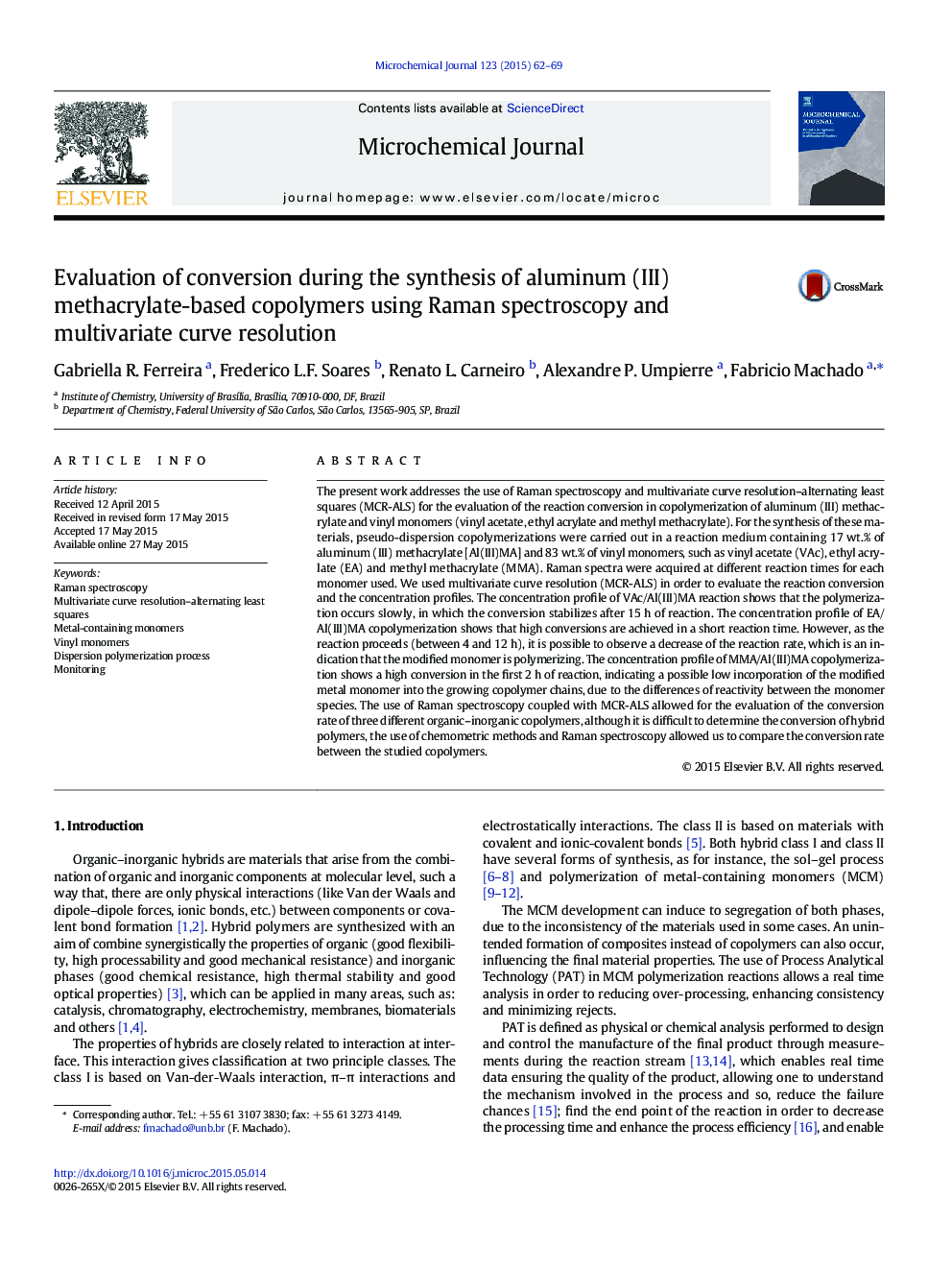| Article ID | Journal | Published Year | Pages | File Type |
|---|---|---|---|---|
| 1227641 | Microchemical Journal | 2015 | 8 Pages |
•Aluminum (III) methacrylate-based copolymers were produced.•A pseudo-dispersion polymerization was employed for copolymerizations.•Reaction conversion was successfully determined by Raman spectroscopy and MCR-ALS.
The present work addresses the use of Raman spectroscopy and multivariate curve resolution–alternating least squares (MCR-ALS) for the evaluation of the reaction conversion in copolymerization of aluminum (III) methacrylate and vinyl monomers (vinyl acetate, ethyl acrylate and methyl methacrylate). For the synthesis of these materials, pseudo-dispersion copolymerizations were carried out in a reaction medium containing 17 wt.% of aluminum (III) methacrylate [Al(III)MA] and 83 wt.% of vinyl monomers, such as vinyl acetate (VAc), ethyl acrylate (EA) and methyl methacrylate (MMA). Raman spectra were acquired at different reaction times for each monomer used. We used multivariate curve resolution (MCR-ALS) in order to evaluate the reaction conversion and the concentration profiles. The concentration profile of VAc/Al(III)MA reaction shows that the polymerization occurs slowly, in which the conversion stabilizes after 15 h of reaction. The concentration profile of EA/Al(III)MA copolymerization shows that high conversions are achieved in a short reaction time. However, as the reaction proceeds (between 4 and 12 h), it is possible to observe a decrease of the reaction rate, which is an indication that the modified monomer is polymerizing. The concentration profile of MMA/Al(III)MA copolymerization shows a high conversion in the first 2 h of reaction, indicating a possible low incorporation of the modified metal monomer into the growing copolymer chains, due to the differences of reactivity between the monomer species. The use of Raman spectroscopy coupled with MCR-ALS allowed for the evaluation of the conversion rate of three different organic–inorganic copolymers, although it is difficult to determine the conversion of hybrid polymers, the use of chemometric methods and Raman spectroscopy allowed us to compare the conversion rate between the studied copolymers.
